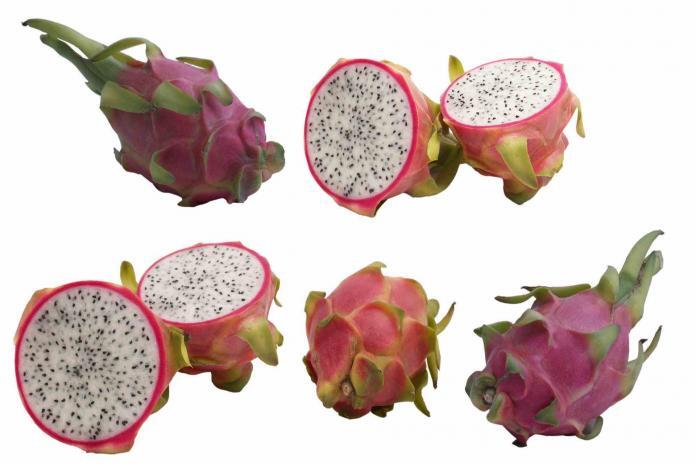Dragon fruit, also known as pitaya, is a type of cactus fruit that comes in three varieties, such as pitaya blanca, pitaya roja, and pitaya amarilla. You can tell if a dragon fruit is ripe by looking at it and touching it before eating it.
The pitaya blanca (Hylocereus undatus) has pink or purple skin and white flesh containing black seeds.
Similarly, pitaya roja (Hylocereus costaricensis) has pink or purple skin, red flesh, and black seeds.
The pitaya amarilla (Hylocereus megalanthus) has yellow skin, white flesh, and black seeds.
Here’s all you need to know about determining whether a dragon fruit is ripe to eat.
Appearance Determine its Ripeness
When a dragon fruit is not ripe, it appears green. The outer skin color of the fruit turns pink, red, or yellow as it ripens, depending on the variety (1).
When fully ripe, the outer skin should be shiny and consistent. If the dragon fruit has a lot of dark spots on the skin, similar to bruising, it’s probably overripe. Similarly, the dragon fruit wings are the leafy parts that rise from the fruit surface (2).
If you notice the tips of the wings drying out and turning brown, the dragon fruit is ready to eat.
If the wings are still colorful, the fruit is probably underripe and needs additional time to ripen. Once the dragon fruit has reached the stage of ripeness where the wings fade, it should come off the plant with a light twist.
It is overripe if the fruit falls off the tree on its own. Depending on the variety, the inside of a dragon fruit is usually white, pink, or purple, containing small black seeds.
When ripe, the inside of a dragon fruit should be juicy but firm. When a dragon fruit is overripe, the inside flesh turns brown and should not be eaten.
Touching Determine its Ripeness
This technique should be used if you are harvesting your own dragon fruit. Squeezing a dragon fruit can bruise it or leave a dent, which is disrespectful to vendors and other consumers in a store.
Hold the dragon fruit in your palm and dab the skin with your fingers to check its ripeness. It should be supple but not mushy. If it’s mushy, the dragon fruit is overripe and probably spoiled. If it’s firm and not giving at all, it will take a few more days to ripen.
Because dragon fruit does not continue to ripen after harvest, it is usually harvested around the peak of ripeness (3).
Another thing to monitor is visible damage on the surface of the fruit, which will be considerably smaller because of the loss of moisture.
Check all sides of the fruit and avoid buying fruit that is damaged. A dried-out stem is one way to determine that a dragon fruit is overripe.
Harvesting Dragon Fruit on Time
Dragon fruits are less likely to ripen after harvesting and should be harvested when they are nearly fully ripe (3, 4).
When the fruit’s color has changed from green to yellow or red, it is ready to be harvested. As the fruit ripens, the little wings on the sides will fade or turn brown (5).
You can also assess ripeness by counting the days after the plant has flowered. The fruit is usually ripe within 30 to 50 days after the plant blossoms (6).
Harvesting should take place four days after the fruit’s color changes.
For export, it is necessary to harvest it early, a day after the color changes.
When the fruit is ripe, the needles should shed on their own, and they should be easy to remove.
However, because the needles are quite pointed, you should always wear gloves and use caution.
When a dragon fruit is ready to be picked, it will detach from the plant by twisting it a few times.
If you have to tug too hard on the fruit, it is probably not ready to be picked. Do not wait until the dragon fruit has dropped from the plant.
This shows that the fruit has become overripe.
Conclusion
The dragon fruit is a mild-flavored tropical fruit that is easy to cut and eat.
It is available in three varieties: pitaya blanca, pitaya roja, and pitaya amarilla.
As the fruit ripens, the outer skin color changes to pink, red, or yellow.
The inside of a dragon fruit should be juicy but firm when ripe.
One sign a dragon fruit is overripe is a dried out stem.
Under-ripe dragon fruit can be collected and stored at room temperature for a few days until ripening.
Harvesting should occur four days after the color of the fruit changes.
Knowing when to harvest and how to pick a dragon fruit is essential for ensuring that you are picking a ripe fruit.

